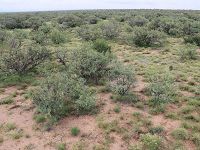How Mesquite Trees Gain a Competitive Edge in Arid Arizona
06 Jul 2018
News Source: EOS
A new study shows that mesquites employ hydraulic redistribution to move water between soil layers in the savannas of Santa Rita.
Water is scarce at the Santa Rita Experimental Range in southern Arizona. The range receives less than 50 centimeters (20 inches) of precipitation each year, and much of that falls during the summer monsoon season from July to September. However, the aridity does not deter plant life from taking root and thriving in the baking Sun.
To survive the harsh conditions, the vegetation in the region employs savvy adaptations to make the best use of the water when it is available. Hydraulic redistribution is one such technique and refers to a plant’s ability to relocate water from wet to dry soil layers using its roots as conduits. Scientists have observed this water redistribution phenomenon in plants spanning climates and ecosystems around the world. In the savannas of Santa Rita, mesquite trees are masters of the practice. Read more ...
News Source:
READ MORE from EOS >>
News Category:
RESEARCH
People Involved
CZO
-
IML, INVESTIGATOR
-
Catalina-Jemez, INVESTIGATOR
Publications
2018
Impact of Hydraulic Redistribution on Multispecies Vegetation Water Use in a Semiarid Savanna Ecosystem: An Experimental and Modeling Synthesis. Lee, E., Kumar, P., Barron-Gafford, G.A., Hendryx, S.M., Sanchez-Canete, E.P., Minor, R.L., Colella, T., and Scott, R.L. (2018): Water Resources Research
Explore Further



